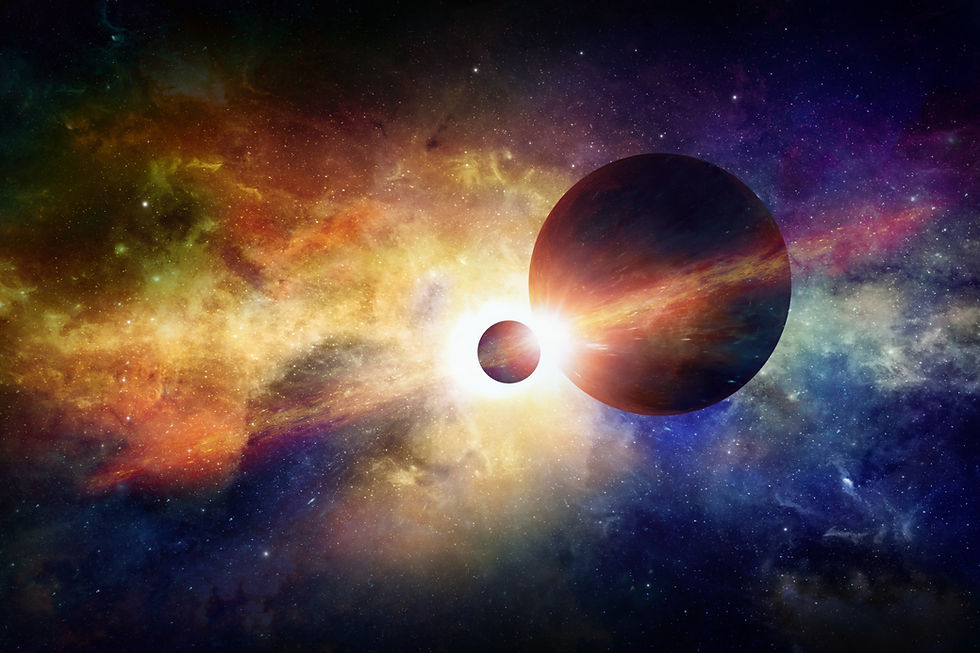Pregnancy in Space: What Would It Be Like to Carry a Baby on a Space Mission?
- heybabymobile
- Aug 4
- 4 min read

Pregnancy is one of the most remarkable experiences in human life. But what happens when this life-changing journey takes place beyond Earth’s atmosphere? As humanity sets its sights on extended space travel and even colonizing other planets, questions arise about the possibility of pregnancy in space. Could someone safely carry a child in orbit? What would prenatal care look like? And how might pregnancy weight differences be influenced by life in zero gravity?
In this blog, we explore the exciting and complex future of pregnancy in space, what it might mean for reproduction beyond Earth, and how it compares to pregnancy around the world.
1. Understanding Pregnancy in Space: Where Science Stands
To date, there has never been a recorded case of pregnancy in space. However, space agencies have conducted significant research on how human bodies react to space environments. From fluid redistribution to muscle and bone loss, many physical systems are altered in microgravity.
These physiological changes present major questions for how pregnancy would unfold in orbit:
Blood circulation: In microgravity, the heart doesn't need to pump as hard, and blood can accumulate in the upper body. This could influence how nutrients and oxygen are delivered to both the mother and the fetus.
Muscle and bone loss: Astronauts experience significant muscle atrophy and bone density loss due to the lack of gravitational pressure. These issues could become even more pronounced during pregnancy, a time when the body is already under increased strain.
Pregnancy weight differences in space may not reflect the same patterns as on Earth. With no gravity acting on the body, physical sensations and weight gain might be experienced very differently, possibly complicating the ability to monitor a healthy pregnancy.
2. Microgravity and Fetal Development: Potential Risks
The earliest stages of pregnancy are especially sensitive to environmental conditions, and microgravity introduces an entirely new set of variables:
Organ development: The lack of gravity could disrupt how bones and muscles form in a developing fetus. On Earth, gravity helps shape physical development, and without it, there is concern that structural abnormalities could occur.
Fluid dynamics: On Earth, fluids are evenly distributed due to gravity. In space, fluids shift upward, potentially affecting placental function and the baby’s access to nutrients and oxygen.
Cell growth: Some studies suggest microgravity alters how cells divide and develop. Any disruptions in early cellular development may impact brain and nervous system formation.
With these unknowns, pregnancy in space would require careful monitoring and likely exclusion from long-duration missions until more is understood.
3. Prenatal Care Off-Earth: A New Frontier in Medicine
Prenatal care on Earth relies on regular scans, physical exams, and expert guidance. In space, those options are limited:
Imaging tools: Diagnostic equipment like ultrasounds is not readily available aboard current spacecraft, making it difficult to track fetal development.
Medical expertise: Most astronauts are trained in basic first aid, but not obstetrics. Without a medical professional on board who specializes in pregnancy, emergency responses would be highly limited.
Medications and nutrition: Prenatal vitamins and other medications might not act the same in space. Absorption rates and effectiveness could differ due to microgravity.
Telemedicine could help bridge some gaps by connecting astronauts with specialists on Earth. However, space communication delays and technical limitations would still make real-time interventions difficult.
4. Labor and Delivery in Space: A Complex Challenge
Even if a pregnancy in space progresses smoothly, the challenge of childbirth remains:
Labor without gravity: On Earth, gravity assists with the baby's descent through the birth canal. In zero gravity, this natural aid disappears, possibly complicating the labor process.
Positioning and restraint: Maintaining proper positioning during delivery would require specially designed equipment to stabilize the birthing person and medical team.
Handling complications: If complications arise- such as excessive bleeding or fetal distress- the lack of a surgical suite and emergency resources could be life-threatening for both mother and baby.
While birth in space has yet to happen, some visionaries are already exploring the concept of dedicated birthing modules or pods that simulate Earth-like conditions.
5. Looking to the Future: Will Pregnancy in Space Become Reality?
As we imagine life on the Moon or Mars, the question of reproduction naturally follows. Will future generations be born beyond Earth?
Artificial gravity: One proposed solution involves rotating space habitats to create centrifugal force, simulating Earth’s gravity. This could support more normal fetal development and reduce pregnancy weight differences that result from zero gravity.
Settlements on other planets: If humans settle permanently on other celestial bodies, reproduction and childbirth will eventually be necessary. These future families may face a blend of challenges and innovations not seen in pregnancy around the world today.
Global comparisons: Around the world, pregnancy experiences vary widely due to cultural, economic, and medical factors. Pregnancy in space adds an entirely new layer to this global picture, pushing the limits of what human biology can adapt to.
Pregnancy in Space and the Next Chapter of Humanity
Pregnancy in space represents a bold intersection between human biology and interplanetary exploration. Though we are still far from establishing norms for childbirth beyond Earth, the conversations happening today are laying the groundwork for future generations of spacefaring humans.
From pregnancy around the world to the possibility of carrying new life in orbit, the evolution of reproduction is a testament to our adaptability. As our reach expands beyond the atmosphere, the next frontier might not just be space travel- it could be the creation of life itself, among the stars.



Comments